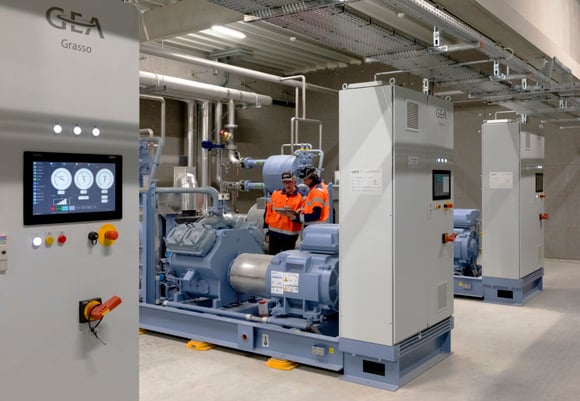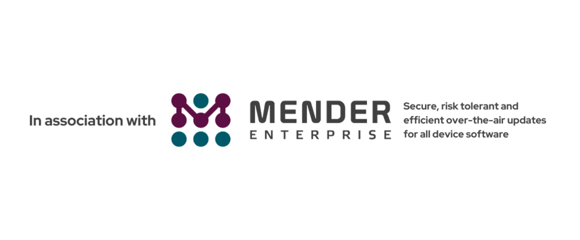The Device Chronicle interviews Cormac Raftery, Head of Software Excellence at GEA, to learn about how process control in large scale manufacturing is being transformed through IoT and other digital technologies.
GEA is a company where process control and process equipment is undergoing digitalisation through IoT opening up great opportunities. This is one of the World’s largest technology suppliers for food processing and serves a wide range of other industries. Cormac works in the global technology division which is a central function in GEA. It looks to harness technology synergies across the wider GEA group.
As part of the Digital Strategy and Transformation team, Cormac leads a team that is tasked with accelerating the roll out of industrial IoT-based solutions across the divisions. He is also active in all areas supporting and harmonising cloud native development particularly in relation to new digital products and services.
Cormac begins by describing the makeup of GEA. He says that over the years GEA has evolved through acquisitions, consolidations and a number of restructurings, all resulting in a technology-based structure of five divisions. The key focus in Global technology is “enabling” the development of the next wave of digital services that complement and extend the existing process equipment and automation and control systems. For greenfield developments GEA would often design and automate entire factories for some of our larger dairy or a brewery customers. However, it’s more common for some of our other divisions such as Separation & Flow Technologies (SFT), Food & Health Technologies (FHT) and Refrigeration Technologies (RT) to produce repeatable discrete process equipment that ship with their own automation process control systems. One of the principal challenges in addressing cross divisional initiatives is overcoming the heterogeneous makeup of the process equipment and their respective automation and control systems”
Process Control and IoT
This diverse ecosystem comes into stark focus when we consider a harmonised IoT strategy. The Refrigeration Technologies (RT) division, for instance, have over 7500 Omni systems installations (their control system for the cooling and heat recovery process) and add a further 1300 units a year. While engineering services would often have remote access to the equipment for reactive care, there was simply no provision made in the past for remote telemetry that could serve as a platform for proactive care. This is one of the principal drivers for IoT: to look at the retrospective installations on our customers’ sites and connect the equipment for a range of digital services that are, quite frankly, expected in this day and age. But the opportunity here is also to look forward from a strategic standpoint and work out how the company and its divisions can sell equipment with enhanced digital services already built in.
Compelling use cases
There are some great examples already in GEA of strong digital services. Cormac points to Farm Technologies (FT) that provides automated milking carousels and herd management systems worldwide. These systems orchestrate how the cows come into the milking parlour based on the RFID identification of each animal and cover all kinds of quality assurance and efficiency factors ranging from udder hygiene, in-line somatic cell count, vision systems for teat attachment right through to all kinds of data that helps optimise the process. In short, every cow has a profile. “This is big data.” The key themes driving growth in the industry is firstly that the industry is consolidating. This is resulting in fewer farms, with more cows and higher productions per cow. Secondly, there is a huge drive for automation – in some regions 90% of all new investments are in automatic milking systems. And lastly, comes the direct effect of digitalisation in the dairy industry. The modern farm is a connected farm using big data and advanced analytics to drive efficiencies and welfare. In FT, the base infrastructure is around 20,000 systems globally that have been using Linux as a base OS for the on premise edge IPC. When we consider any cloud connectivity it becomes extremely important to “harden” this infrastructure to ensure that these systems are secure by design.
Common technology approach
Cormac is looking to illustrate the benefits of a common technology approach and is looking for best of breed technology partners and point solutions to solve complex and dynamically changing infrastructure. “There is an appreciation that this complex technology such as secure and robust OTA software updating for embedded devices is not something that GEA would prefer to develop on its own in-house. Mender.io is considered a mature solution in this regard.”
New capabilities in process control
When Cormac looks at digital transformation and IoT and how it relates to process control, he sees two capabilities that must be unleashed. The first is remote access. GEA engineers must be able to access customer plants as if they were sitting in the plant. They need to monitor and troubleshoot process equipment as single units or as part of larger full turnkey project.
Clearly, the Covid 19 pandemic has accelerated the need to do this better and has given a clear mandate to accelerate the adoption of IoT. Cormac says “We now get a flow of real time information that can be carved up in many ways and the key insights from the data can be used to improve our service offering and keep our process equipment running as optimal as possible.”
The second is the digital twin. Cormac continues to say that once you build initial IoT connectivity from equipment, so many opportunities open up. The subject matter experts can get their eyes on the raw data and a digital twin streamlines and builds better modelled equipment which paves the way for improved automation. For Cormac, the digital twin is a “pane of glass” which experts can enrich by combining it with other systems and technologies. It is a stepping stone to building the next level of automation based on machine learning, streaming engines and so forth.” The concept of the digital twin is the ability to craft metrics and KPIs on a case by case basis. In some cases this can be realised with little or no programming such as modelling a piece of equipment correctly. However, the compelling insights come from connecting disparate and heterogeneous systems. This has always been the trickier aspect to solve as you can quickly burn through time and money coming up with elegant and repeatable engineering strategies. One of opportunities posed by the digital twin is that it creates an abstraction layer that can standardise the behaviour and the interfaces between IoT and these other systems, effectively removing the need to “once-off” coding efforts.
IoT and OT convergence
Cormac also points to the convergence between IoT and operational technologies and the constrained device. Key questions must be answered: How does the constrained device fit with the control system? How can security by design be implemented and what is the best network design to support this? Cormac says that nearly every process equipment has some driver to enable IoT but that process control systems inherently require more security. “We have to be vigilant about security leaks and flaws.” GEA has a program to enable security by design through product security frameworks. DevSecOps will play a key role for Cormac. GEA is currently recalibrating it’s approach to security by instilling the mindset that “everyone is responsible for security.”
Cormac and his colleagues at GEA also make key distinctions among the vendors for process control systems and IoT. The automation providers such as Siemens, Allen Bradley and Schneider have been adapting IoT solutions into their product lines. Siemens have been quite dominant in this area with their MindSphere cloud. Nevertheless, the IoT floodgates have opened up over the past year or two and the “Industrial” IoT space can no longer be considered a protected zone for the big automation houses. If anything the landscape has turned upside down with IoT hardware vendors offering end to end solutions. To differentiate, Cormac and his colleagues use key characteristics from the IEC 62443 specification to ensure conformance to industrial standards and best practices have been applied. Cormac describes recent experiences as like “comparing apples and oranges” as the vendors can be so different.
Best-of-Breed aids process control
Cormac sees great importance in working with Best-of-Breed technology providers. He says that “GEA despite its scale, needs to be mindful of resources, and the company’s technology divisions don’t want to overextend themselves and then be left with large technical debt. There is also the danger of over engineering if the development work is done internally. So instead the technology teams focus on the core business value-add activities and do not take on the in-house development of point expert systems such as OTA software updates. Here there are complex security considerations, the change is so dynamic, and embedded systems or constrained devices have to be understood and managed at a detailed level.
There are exceptions in such a large company as GEA. For instance, the GEA Refrigeration Technologies Division has, Cormac says, an established track record developing on embedded devices whereas other divisions have been using standard PLCs and IPCs. Cormac again reminds us that the Central Technology functions (Global Technology and IT Shared Services) wants to encourage a common approach between those divisions using standard PLCs and IPCs and those who want to develop on embedded systems. “We want to allow colleagues to express what they want to do, and we want to make sure that our central technology selections are abstracted from the hardware selections.” Cost is also coming down for embedded systems which helps increase margins on products and services and thus increasing the adoption of embedded systems.

Improvements from key insights
Ultimately, for Cormac, all of this comes down to developing capabilities to help people look at and use data. He believes that once people move to the new digitally-enhanced processes then new services and innovations flourish from gleaning key insights from the data. He points to one case where the existing technology stack behind one of GEA’s very successful process optimization products called OptiPartner, spun out a number of additional services, almost by-products of the original service. One of these new services in particular focused on using process data to speed up the commissioning process by weeks if not months.
We wish Cormac and his colleagues at GEA well as they continue their digital transformation journey.
To learn about digital transformation in maritime read about MacGregor’s experiences.

